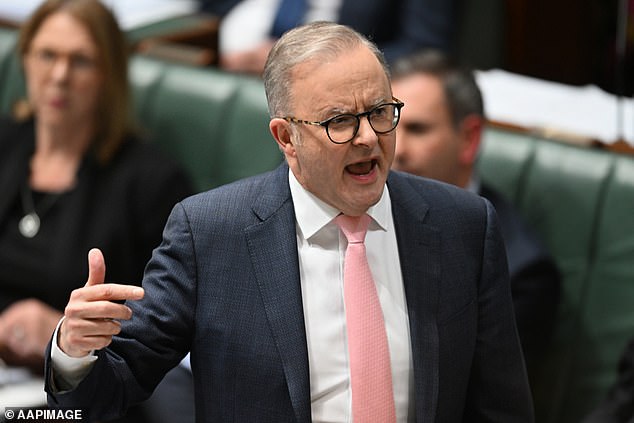Why Anthony Albanese’s ambitious housing plan could cause a financial crisis
An expert fears that Anthony Albanese’s plan to build 1.2 million homes starting this week could lead to an insolvency crisis in the coming years.
Australia is facing a housing crisis as building permits lag far behind population growth fuelled by immigration.
New data from the Australian Bureau of Statistics shows local governments approved just 163,759 new homes in the year to May.
But this was still far short of Labor’s target of building 240,000 a year over five years, starting on July 1. The Prime Minister’s target was to build 1.2 million homes.
Matthew Caddy, a partner at McGrathNicol in Melbourne with more than 25 years’ experience handling corporate insolvencies, says artificially inflating apartment construction is more likely to trigger an insolvency crisis in the coming years.
“If the government focuses on a particular area at a particular time, that can lead to a spike. But we also see that those spikes are often not managed well on the other side,” he told Daily Mail Australia.
“You bring the demand forward and sometimes you create an artificial demand. On the other hand, it is not unusual that you then see an abnormal number of bankruptcies.”
The low number of building permits is also due to the fact that 487,820 migrants moved to Australia in the year to April, leaving a shortage of 78,422 homes. This figure is based on households with an average of 2.5 people.
Anthony Albanese’s plan to build 240,000 homes a year from this week could trigger an insolvency crisis in the coming years, an insider fears (pictured are apartments under construction in Sydney)
Despite the housing shortage, developers in particular are struggling, with construction companies now accounting for more than a quarter of Australia’s bankrupt companies.
“Many feasibility studies are not profitable, which reduces construction activity,” Mr Caddy said.
‘The number of bankruptcies in the construction sector more often relates to construction projects with a higher density than to developments in the ground and construction sector.
‘With such projects, the margins are very small and when demand falls, everyone has to compete for what is available and that squeezes margins even further.’
Although there is a housing shortage in Australia, Australians increasingly want to live in a house with a backyard rather than in a cramped, high-rise apartment complex.
“At the customer level, in terms of buyer demand, demand has been somewhat subdued,” Mr Caddy said.
While investors traditionally preferred one- and two-bedroom apartments, they were wary of larger three-bedroom apartments.
“A lot of apartment buildings are built as investment properties: one- and two-bedroom apartments,” Mr. Caddy said.
“A lot of apartment complexes were built that were more geared towards people who are buying their own home and want to live smaller. They were mainly focused on the three-bedroom market, which is not at all popular with investors. The demand for these apartments has decreased significantly over the last 24 months.”
The construction sector was by far the hardest hit in Australia, with 2,832 companies going bust in the year to 16 June, a rise of 33.7 per cent, according to data from the Australian Securities and Investments Commission.

The federal government has committed $9.3 billion from the states and territories to help meet the target of building 1.2 million homes in the five years to 2029
Fixed price contracts and higher costs for building materials are hampering builders despite Australia facing a housing shortage due to record high immigration.
The federal government has committed $3 billion to states and territories to help meet a target of building 1.2 million homes over the five years to 2029.
Housing Minister Julie Collins said building more homes was the best way to tackle population growth.
“Building more homes is the best way to address Australia’s housing problems,” she said.
Mr Caddy was critical of both sides of the political spectrum, noting that former Prime Minister Scott Morrison’s HomeBuilder program, which provided $15,000 grants during the pandemic in 2020, had also led to a rise in construction industry bankruptcies after the program ended.
